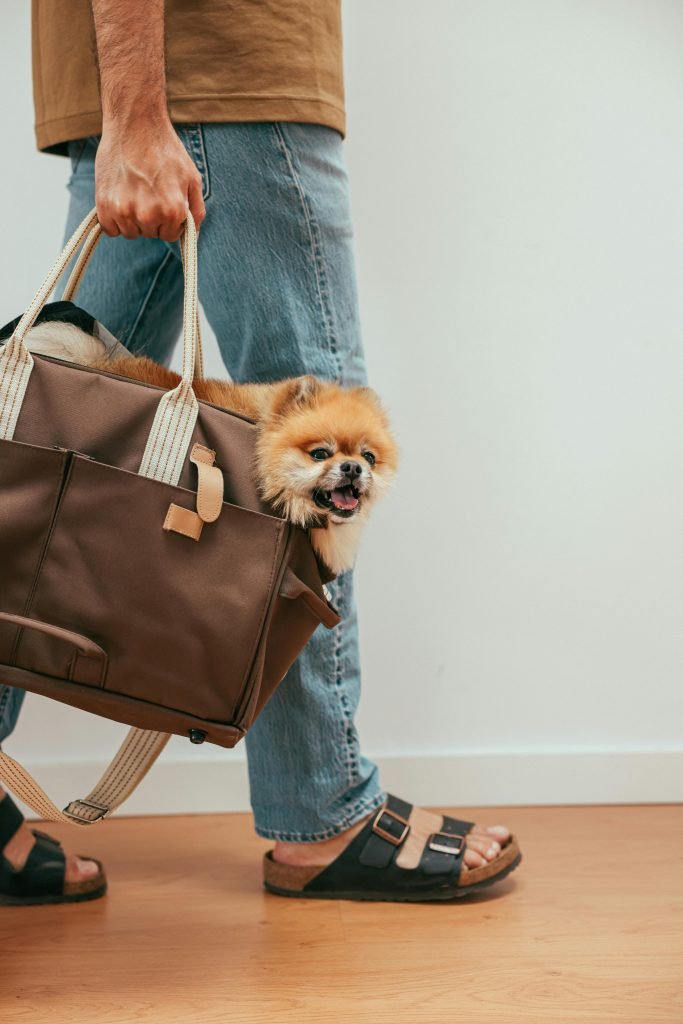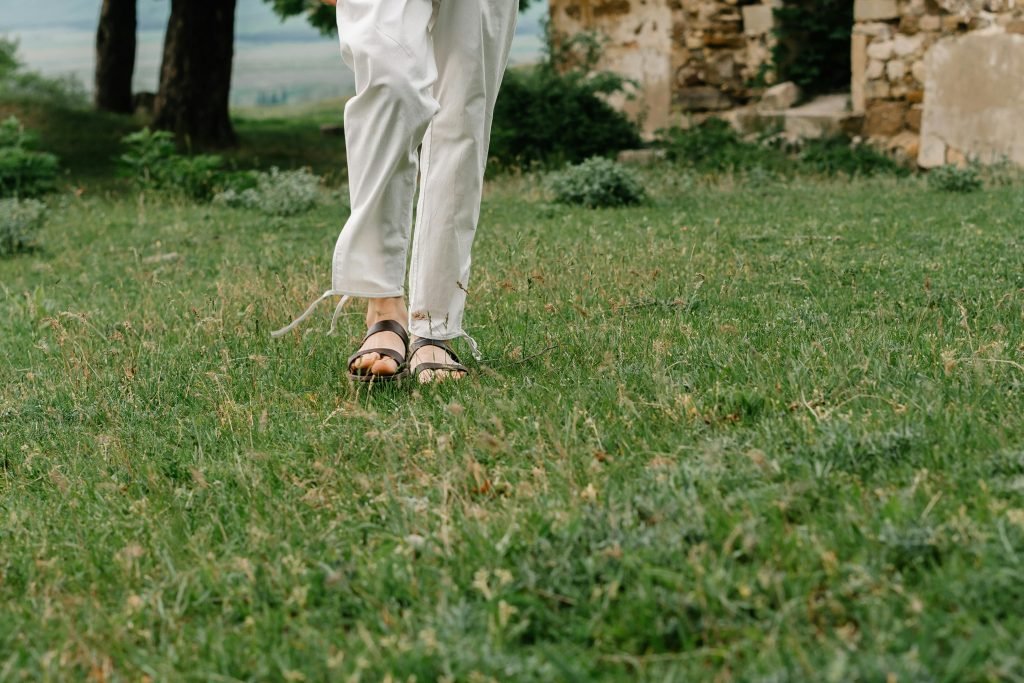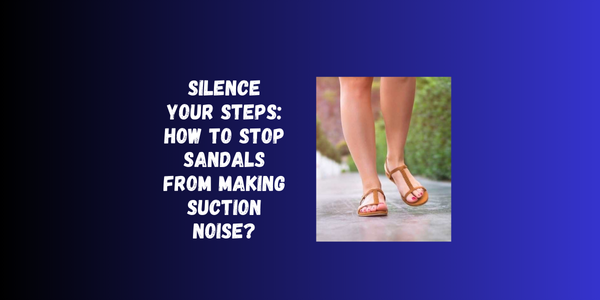To stop sandals from making suction noise, apply baby powder or cornstarch to the footbed. This absorbs moisture and reduces friction.
Sandals are a popular choice for comfort and style, especially during warmer months. However, that annoying suction noise can dampen the experience. Whether you’re at the beach, running errands, or enjoying a casual outing, noise from sandals can be distracting.
Fortunately, there are simple solutions to this common issue. By understanding the causes behind the noise, you can effectively address it.
This guide offers practical tips to eliminate suction sounds from your sandals, enhancing your comfort and confidence. Say goodbye to noisy footwear and enjoy a quieter, more pleasant walking experience.
The Squeaky Sandal Dilemma

Squeaky sandals can be a nuisance. They disrupt your peace and make every step sound loud. Understanding why sandals make these noises can help you find solutions. Let’s explore the causes and why silence matters.
Causes of Suction Noise in Sandals
If you’ve ever walked across a room only to have your sandals emit an awkward suction or squeaking noise, you’re not alone. Several factors contribute to this common but irritating problem. Understanding the cause can help you find the right solution and bring peace to your steps.
Material Friction
One of the most common culprits is material friction. When different parts of the sandal — such as the footbed and your skin or the sole layers — rub together, they can create squeaky or suction-like sounds. This is particularly common in sandals made from synthetic materials or rubbery textures, which naturally grip the foot more tightly during movement.
Water Accumulation
Moisture can also be a major factor. If water gets trapped between your foot and the sandal or within the layers of the sandal itself, it can create a vacuum effect. Each step you take pushes air out, producing a suction noise. Even slight dampness from sweat or humidity can trigger this problem.
Loose Parts
Over time, parts of a sandal can loosen. Straps that no longer sit firmly or soles that begin to separate slightly can shift while you walk, creating friction and noise. Loose parts not only make sandals noisy but can also affect your walking comfort and stability.
Design Flaws
Not all sandals are designed with quality craftsmanship. Poorly constructed footwear may lack adequate cushioning, proper strap placement, or sturdy stitching. These flaws can lead to materials rubbing together in unnatural ways, creating constant squeaks or suction sounds with every step.
Identifying the specific cause behind the noise is the first step toward restoring your sandals’ quiet comfort. Once you know what’s causing the issue, whether it’s moisture, friction, or a loose component, you can address it more effectively.
Why Silence Matters When Wearing Sandals
You might think a little noise from your sandals is harmless, but the truth is that a quiet pair of shoes can significantly impact your daily experience. Here’s why keeping your sandals silent matters more than you might expect:

Comfort
Quiet sandals tend to feel more comfortable overall. No distracting sounds mean your focus stays on the soft cushioning beneath your feet and the smoothness of your walk — not on irritating squeaks echoing with every step.
Focus
A suction or squeaking sound can pull attention away from your activities, whether you’re shopping, working, or simply enjoying a walk. Quiet footwear allows you to concentrate fully on your tasks and surroundings without unnecessary distractions.
Style
Your outfit might be polished and your look impeccable, but noisy footwear can undermine that impression. Silent sandals contribute to an effortlessly stylish appearance, ensuring that all eyes stay on your confident stride, not your squeaky steps.
Confidence
There’s something empowering about walking into a room without making an unintended announcement. Silent sandals help you move with grace and confidence, whether you’re navigating a quiet office, a bustling café, or a peaceful park.
In short, eliminating noise from your sandals is not just about comfort — it’s about elevating your entire walking experience. Quiet steps reflect both attention to detail and personal pride, making every journey more enjoyable.
Materials and Tools Needed
Fixing suction noises in sandals is easier when you have the right supplies ready. Many of the necessary tools are already common household items, while a few specialized products can enhance the results. Gathering these materials beforehand ensures the repair process goes smoothly.

Everyday Household Items
You don’t need fancy equipment to fix most sandal noise problems. These everyday items work wonders:
- Baby Powder: Perfect for absorbing excess moisture that can create suction or squeaking sounds between your foot and the sandal.
- Petroleum Jelly: A small amount applied at friction points reduces rubbing and allows smoother movement.
- Rubber Bands: Wrapping rubber bands strategically around loose straps or soles can create better grip and minimize noise.
- Sandpaper: Lightly roughening slick sole surfaces with sandpaper can eliminate vacuum-like suction sounds.
- Hot Glue Gun: Useful for sealing tiny gaps or reattaching loose parts that may shift and cause noise during walking.
Specialized Products
If the household solutions don’t fully fix the problem, a few specialized items can take your repairs to the next level:
| Product | Purpose |
|---|---|
| Anti-Squeak Spray | Designed specifically to eliminate friction noises in footwear. |
| Silicone Spray | Forms a moisture-resistant layer that prevents suction. |
| Footwear Insoles | Adds extra cushioning, helping to reduce impact noise. |
| Rubber Sole Adhesive | Perfect for securing loose soles that shift and squeak. |
These products are usually inexpensive and available at shoe repair stores, online retailers, or major department stores.
Preparation Steps
Before you can silence your noisy sandals, it’s essential to prepare them properly. Cleaning and drying the footwear not only removes hidden debris but also creates a clean surface for any fixes you apply.
Cleaning Your Sandals
Dirt, grime, and even old moisture residues can contribute to unwanted suction noises. Follow this cleaning method:
- Gather Your Supplies: Mild soap, warm water, a soft-bristled brush (like a toothbrush), and a clean towel.
- Prepare a Cleaning Solution: Mix a small amount of mild soap with warm water in a basin.
- Gently Scrub: Use the soft brush to gently scrub all surfaces of the sandals, focusing on areas where the sole meets the upper straps.
- Pay Attention to the Soles: Dirt trapped in treads and cracks often exacerbates suction sounds. Scrub these areas carefully.
- Rinse Thoroughly: Make sure to remove all traces of soap.
- Dry the Sandals: Pat the surfaces with a clean towel to remove excess moisture.
Drying Techniques
Proper drying is just as important as cleaning. Even small amounts of trapped moisture can cause noise. Here’s how to dry your sandals correctly:
- Air Dry in a Ventilated Area: Place the sandals somewhere with good airflow but away from direct sunlight, which can warp materials like leather and synthetic fibers.
- Use a Fan: If you want to speed up the process, position a fan near the sandals to circulate air.
- Avoid Heaters or Dryers: Artificial heat can shrink or crack sandal materials, making the problem worse.
- Double-Check for Moisture: Before attempting any repairs, make sure the sandals are completely dry inside and out.
Taking a little extra time for cleaning and drying gives you a much better chance of eliminating that frustrating suction sound for good.

Credit: www.solethreads.com
Adjusting Strap Fit
Getting the strap fit just right on your sandals isn’t just about comfort—it’s also one of the simplest ways to silence those irritating suction noises. Properly adjusted straps prevent excessive movement, which means fewer chances for awkward sounds as you walk.
Tightening Loose Straps
Loose straps are one of the most common culprits behind suction noises. When straps aren’t snug, they leave small gaps between your foot and the sandal base. Air pockets form with each step, producing that unwanted “squeak” or “pop” sound.
Here’s a simple way to tighten them properly:
- Inspect each strap: Look closely at every fastening point to find where the sandal feels loose.
- Adjust for snugness: Gently tighten each strap until it hugs your foot securely without causing discomfort.
- Double-check the fit: Walk a few steps to test the adjustment. If your foot stays firmly in place without sliding or creating noise, you’ve got the right fit.
A properly tightened strap not only helps silence your sandals but also improves walking comfort and reduces the risk of tripping or irritation.
Padding For Better Fit
If tightening alone doesn’t solve the problem, adding padding is an effective next step. Padding fills extra space and prevents friction, which reduces suction noises even further.
Here’s how to pad your sandals for a better fit:
- Purchase adhesive foam pads: These are easy to find at most drugstores or online.
- Trim to size: Cut the pads into smaller pieces to fit inside straps or underfoot.
- Apply strategically: Stick the padding directly where gaps exist—often around the sides or under loose straps.
Well-placed padding not only muffles sound but also makes your sandals more comfortable for long walks. It’s a quick, inexpensive fix that can make a big difference.
Sole Modifications
Sometimes, the problem lies not with the straps but with the soles themselves. A few clever tweaks to the bottom of your sandals can stop suction noises in their tracks and even improve your overall walking experience.
Applying Anti-slip Pads
Anti-slip pads are a highly effective tool for quieting noisy sandals. These thin, adhesive pieces are made from textured materials that prevent the soles from creating a vacuum effect.
Here’s how to apply them properly:
- Clean the soles thoroughly: Use a damp cloth to wipe away any dirt or debris. Let them dry completely.
- Cut to fit: Trim the anti-slip pads so they match the size and shape of the sole.
- Stick firmly: Peel the backing off the pad and press it onto the sole. Make sure there are no air bubbles.
Benefits of using anti-slip pads:
- Sound Reduction: They absorb movement vibrations and eliminate the suction sound.
- Improved Traction: Anti-slip pads give better grip, especially on slick surfaces like tile or hardwood floors.
- Added Comfort: The slight cushioning effect can make walking more enjoyable over long periods.
Applying anti-slip pads is a fast, affordable solution that transforms noisy sandals into silent, comfortable companions.
Diy Texturing Methods
Creating texture on the sole can help. Rough surfaces reduce suction noises. Try these DIY methods:
| Method | Description |
|---|---|
| Sandpaper | Use coarse sandpaper to roughen the sole. |
| Hot Glue | Apply small dots of hot glue on the sole. |
| Texture Spray | Use texture spray for a non-slip finish. |
Choose any method that suits you. Each will help reduce noise effectively. Enjoy quieter walks with your sandals!
Moisture Management
Moisture management is key to preventing suction noise in sandals. Excess moisture leads to squeaks and discomfort. Keeping your feet dry allows for a smooth walking experience.
Foot Powders And Sprays
Using foot powders and sprays can help absorb moisture. They keep your feet dry and reduce friction. Here are some popular options:
- Baby Powder – Great for absorbing moisture.
- Cornstarch – Natural and effective moisture absorber.
- Foot Sprays – Designed to combat sweat and odor.
Apply these products before putting on sandals. A thin layer is often enough. Reapply throughout the day if needed.
Natural Remedies
Natural remedies can effectively manage foot moisture. Here are some simple ideas:
- Baking Soda – Sprinkle it inside sandals overnight.
- Essential Oils – Use tea tree oil for its antibacterial properties.
- Apple Cider Vinegar – Mix with water and spray on feet.
These remedies help keep your feet dry and odor-free. They are safe and easy to use. Experiment to find what works best for you.
Behavioral Adjustments
Changing your walking habits can help reduce that annoying suction noise from sandals. Simple adjustments in your movement can make a big difference. Here are some effective techniques to try.
Walking Techniques
How you walk affects noise levels. Here are some tips:
- Walk Softly: Try to place your feet gently on the ground.
- Lift Your Feet: Avoid dragging your feet while walking.
- Practice Short Steps: Smaller steps can reduce noise.
Practice these techniques regularly. They can help lessen the suction sounds.
Footwear Rotation Strategy
Using a rotation strategy can extend the life of your sandals and reduce noise. Here’s how:
- Have Multiple Pairs: Use different sandals throughout the week.
- Allow Drying Time: Give each pair time to dry after use.
- Inspect Regularly: Check for wear and tear often.
Rotating footwear can minimize the noise. It also keeps your sandals in better shape.

Credit: www.solethreads.com
Long-term Solutions
Dealing with suction noise from sandals can be annoying. Long-term solutions can help you enjoy your sandals without distractions. Here are effective strategies to consider.
Choosing The Right Sandals
Material Matters
The material of your sandals plays a major role in both comfort and sound control. Choosing breathable and durable materials ensures better performance and longevity.
- Leather: Full-grain or genuine leather molds naturally to your foot over time, offering both comfort and minimal noise due to its flexible nature.
- Fabric: Strong woven fabrics, such as canvas, are lightweight and breathable, helping to reduce moisture buildup that can lead to suction sounds.
- Avoid cheap plastics: Low-quality synthetic materials are often rigid and prone to creating friction, which may result in squeaky noises as you walk.
A well-chosen material not only looks good but also supports a quieter, more comfortable step.
Proper Fit
A snug yet comfortable fit is essential to prevent suction noises. Ill-fitting sandals often allow your foot to slide slightly, creating tiny pockets of air that lead to squeaking sounds.
Here’s what to focus on:
- Secure Straps: Straps should firmly hold your foot in place without digging into your skin.
- Stable Foot Position: Your heel and toes should stay aligned without slipping forward or backward.
- Room to Breathe: Ensure a little space around your toes to prevent unnecessary pressure but avoid sandals that feel too loose.
Always try sandals on while standing and walking to test the fit fully.
Cushioning and Footbed Design
The footbed—the part of the sandal your foot rests on—can dramatically affect comfort and sound.
Look for these features:
- Cushioned Footbeds: Memory foam, EVA foam, or padded insoles help absorb shock and minimize friction-related noises.
- Contoured Shapes: Footbeds shaped to fit the natural curves of your foot offer better support and less movement, preventing suction sounds.
- Moisture-Wicking Materials: Some footbeds are designed to keep your feet dry, which helps avoid the dampness that can lead to squeaking.
A good footbed not only provides better walking comfort but also extends the life of your sandals.
Smart Design Choices
The overall design of the sandal can influence how quietly it performs. Simpler designs often mean fewer opportunities for noise-causing friction or gaps.
Consider these points:
- Fewer Moving Parts: Sandals with multiple overlapping straps or unnecessary attachments tend to create more friction.
- Solid Soles: A firm, single-piece sole structure prevents air from getting trapped and causing suction noises.
- Low-profile Styles: Streamlined designs without heavy embellishments usually fit more securely and move with your foot, reducing unwanted sound.
By paying attention to these details, you’ll find sandals that are not only stylish but also durable, comfortable, and whisper-quiet.
Here’s a simple table to help you choose the right sandals:
| Feature | Recommended Options |
|---|---|
| Material | Leather, Fabric |
| Fit | Snug, Not Tight |
| Footbed | Cushioned, Supportive |
| Design | Minimalistic, Fewer Parts |
When To Seek Professional Help
Some issues may require expert assistance. Consider these signs:
- Persistent noise after trying solutions.
- Visible damage to the sandal.
- Foot pain or discomfort while wearing.
Professionals can assess and repair sandals effectively. They can offer tailored advice for your specific needs. Don’t hesitate to consult a shoe repair specialist.

Credit: www.youtube.com
Frequently Asked Questions
- How Can I Reduce Noise From Sandals?
Use talcum powder or baby powder on the soles to minimize friction and reduce noise effectively.
- What Causes Sandals To Make Suction Noise?
Suction noise often occurs due to moisture or air trapped between the sandal sole and the ground.
- Can I Fix Noisy Sandals At Home?
Yes, applying a thin layer of silicone spray or petroleum jelly can help eliminate the noise.
- Are Certain Sandal Materials Quieter?
Rubber soles tend to create less noise compared to plastic or foam, providing a quieter walking experience.
- Should I Replace Noisy Sandals?
Consider replacing them if the noise persists after trying remedies, as it may indicate wear and tear.
Conclusion
Stopping the suction noise from your sandals can enhance your comfort and confidence. With simple solutions like using powder, adjusting straps, or choosing the right fit, you can enjoy a quieter walk.
Implement these tips for a more pleasant sandal experience and say goodbye to those annoying sounds today!

